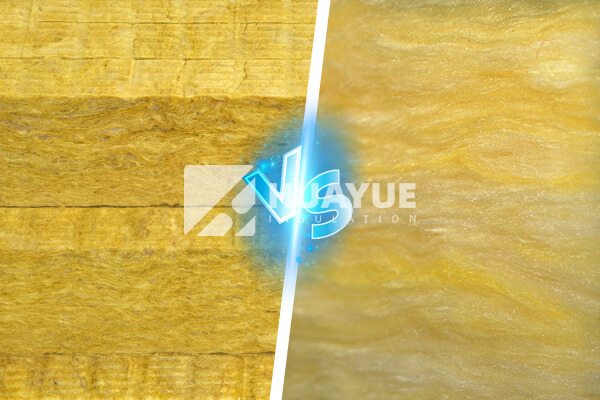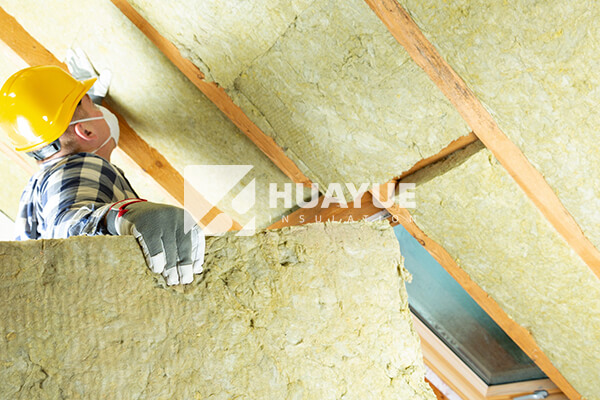Mineral Wool vs Fiberglass Insulation: Which One Fits Your Project Best?
Homeowners and builders worry about finding the right insulation. Wrong choices cost money and create headaches down the road. The two biggest players are mineral wool and fiberglass, each with real strengths.
The difference between mineral wool and fiberglass insulation comes down to thermal performance, weight, fire resistance, sound control, moisture handling, and installation feel. Mineral wool usually gives higher performance and fire resistance. Fiberglass is lighter and easier to work with in some cases, making it smart for attics or quick renovations.

No one wants regrets after a project is done. If you need insulation that keeps energy bills down, provides real safety, and lasts for years, keep reading. I’ll share my experience and walk you through every feature in plain language. Let’s take a look at how HUAYUE mineral wool and fiberglass measure up where it counts.
What About Thermal Performance? Which Keeps the Heat In or Out Best?
Everyone wants a cozy home and to cut heating costs. My clients always ask how mineral wool and fiberglass compare for stopping heat loss and keeping rooms just right.
Mineral wool insulation from HUAYUE usually offers a slightly higher R-value at equal thickness compared to fiberglass. You may see R-15 for mineral wool at 3.5 inches thick versus R-13 for fiberglass of the same depth.

When picking insulation, the R-value tells us how well it stops heat flow. The higher the R-value, the less energy escapes and the less your HVAC needs to run. Here’s how I often explain it to customers:
| Material | Thickness (inches) | Typical R-Value |
|---|---|---|
| HUAYUE Mineral Wool | 3.5 | 15 |
| HUAYUE Fiberglass | 3.5 | 13 |
Even though mineral wool does better on paper, real-world comfort might not feel that different. Sometimes the structure of your building or the amount of insulation space you have matters even more. If you aim for maximum energy savings or high-performance buildings, mineral wool might pull ahead. However, if the budget or weight is tight, fiberglass still does a solid job without much sacrifice.
Does Weight Matter For My Project?
Some people think insulation is all the same, but in my experience, even weight can change what works and what causes trouble.
Mineral wool is heavier per square foot than fiberglass, sometimes by a lot. If you need high R-values, like R-49 in attics, mineral wool’s extra weight might put strain on ceiling gypsum board or other framing. Fiberglass has an advantage in these cases because it is much lighter and easier to use on large surfaces above your head.

I’ve walked through many new builds and renovations where using heavy mineral wool in attics risked bowing or damaging ceiling materials. In those cases, switching to HUAYUE fiberglass meant faster work and no headaches for the drywall crew or the client. For walls and floors, you might not care as much about weight, but in attics or delicate renovations, fiberglass is the safer bet for structure and speed.
| Application Area | Preferred Insulation | Why |
|---|---|---|
| Attic (direct on drywall) | HUAYUE Fiberglass | Lower weight, less stress |
| Walls, Basements | HUAYUE Mineral Wool | Better performance possible |
Which One Shields Against Noise and Fire Best?
Peace and safety count just as much as warmth. Some clients care most about how insulation quiets their home or protects against fire. These are important features, especially in busy or hazardous environments.
Mineral wool dampens noise slightly better than fiberglass, but in real walls, the difference rarely jumps out to most ears. Both can help meet tough building codes for soundproofing.
For fire resistance, mineral wool has the edge by a lot. HUAYUE mineral wool withstands very high temperatures, with a much higher melting point than fiberglass. Both are non-combustible when unfaced, but mineral wool is the top pick if your project needs the strictest fire ratings.
In my own work with chemical and manufacturing clients, I’ve seen fire safety rules make mineral wool the only choice. In family homes and most offices, both materials keep you safer than no insulation at all, but mineral wool’s extra buffer helps everyone sleep easier at night.
| Performance Factor | HUAYUE Mineral Wool | HUAYUE Fiberglass |
|---|---|---|
| Sound Absorption | Slight advantage | Good |
| Fire Resistance | Excellent | Good |
How Do They Handle Moisture and Installation?
Humidity and installer comfort sound less exciting, but sweating the details now avoids mold, call-backs, or wasted time later.
Both mineral wool and fiberglass need vapor barriers if you want to block water vapor. HUAYUE fiberglass is available with facing, which makes installation quicker when you need a vapor-resistant layer. Mineral wool usually arrives unfaced, so adding a separate vapor barrier is an extra step.
I can’t forget how much this matters on busy job sites. Some installers like the soft flexibility of HUAYUE fiberglass. Others prefer the firm slabs of mineral wool, which don’t slump and fill wall spaces neatly. In the end, it’s a personal choice. For retrofits or tricky spaces, fiberglass bends easily. In big, straight wall sections, mineral wool sets in tight and solid.
Here’s my quick comparison during training:
| Feature | HUAYUE Mineral Wool | HUAYUE Fiberglass |
|---|---|---|
| Vapor Barrier | Needs separate layer | Faced options ready |
| Feel | Dense, rigid | Flexible, soft |
| Handling Preference | Rigid (some prefer) | Flexible (others like) |
Where Should You Use Each One?
You have choices for every job. I always match materials to places where they make the most sense.
HUAYUE mineral wool works best for outside walls, basement walls, and crawl spaces—places where higher R-values and fire safety matter. For continuous insulation over large surfaces, mineral wool edges out fiberglass because of its solid feel and resistance.
HUAYUE fiberglass finds its place in interior and exterior walls, basements, garages, and attics. It’s the go-to when the weight matters or you need a quick answer for hard-to-reach spaces.
| Area | Best Choice |
|---|---|
| Exterior Walls | Mineral Wool |
| Attics | Fiberglass |
| Basements | Either |
| Continuous Insulation | Mineral Wool |
You don’t always need the highest R-value or weight the structure can handle. Good builders pick the right insulation to meet the need—no more, no less.
Conclusion
Both HUAYUE mineral wool and fiberglass insulation perform well, but matching them to your project’s needs brings the safest, coziest, and most cost-effective results.
You may also be interested in:
Ready to Get Started?
Get in touch with our experts for personalized solutions tailored to your needs.
Get Free QuoteLatest Articles

Fiberglass Insulation Roll - What’s Inside the Roll?
Dec 22, 2025
Let's Work Together
Ready to take your business to the next level? Get in touch with our team of experts and let's discuss how we can help you achieve your goals.
Get Free Solutions






